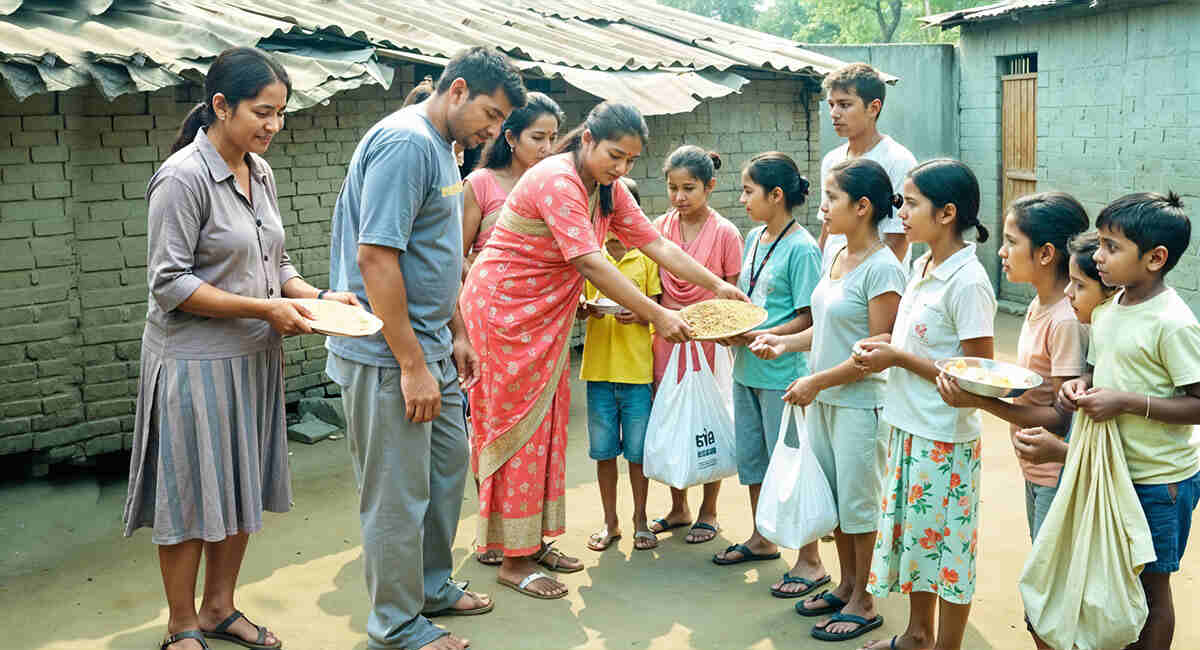Odisha celebrates Puspuni/Pausha
Odisha, on the eastern coastline of India, is known for its rich historical legacy, diverse tribal communities, and deep-rooted agricultural traditions. Among the many festivals celebrated here, Puspuni—also spelled Pus Punei or Puspuni Parab—holds a special place, especially among the tribal communities of Western Odisha. This vibrant and heartfelt festival is more than a seasonal event; it’s a soulful expression of gratitude, joy, and renewal, symbolizing the end of the harvest season and the beginning of a new agrarian cycle.
Origins and Significance of Puspuni
The people derived the term Puspuni from the Odia words “Pus,” referring to the month of Pausha (which falls between December and January in the Gregorian calendar), and “Puni,” meaning full moon. People celebrate the festival on the full moon day of the Pausha month, a period that holds great significance for the agrarian and tribal communities of Odisha. This is when farmers finish the hard work of sowing and reaping, stock their granaries, and take a moment to pause, celebrate, and look forward to the year ahead.
Puspuni marks not only the completion of the agricultural cycle but also serves as the tribal New Year. It is a symbolic moment of transformation—a farewell to the old and welcoming the new, imbued with hope, prayers, and collective cheer. It represents the harmony between people and nature, underscoring themes of sustainability and coexistence that have defined tribal ways of life for centuries.
Who Celebrates Puspuni?
Primarily observed by the tribal communities of Western Odisha, Puspuni is a significant cultural event in districts such as Sambalpur, Bargarh, Sundargarh, Balangir, and Kalahandi. Tribal groups, including the Kondha, Gond, Binjhal, Munda, and Santal, partake in the festivities, bringing their unique customs and traditions to the celebration.
Over the years, the spirit of Puspuni has transcended regional boundaries, with its influence spreading to other parts of Odisha. People who have migrated to urban centers often return to their native villages for this occasion, making it a beautiful reunion of families and communities.
Rituals and Preparations
Preparations for Puspuni begin well in advance, often creating a buzz of anticipation throughout villages. People carefully clean their homes to welcome prosperity and good fortune. Traditional Alpana or Jhoti—beautiful, intricate patterns drawn with rice paste—adorn the floors and walls. Houses are illuminated with earthen lamps, flowers, and colorful decorations, setting the tone for celebration.
One of the most distinctive features of Puspuni is the worship of cattle and agricultural tools. Cattle, essential companions in farming, are bathed, decorated with garlands, and fed special meals as a gesture of respect and gratitude. Farmers also pay homage to their ploughs, sickles, and other tools, acknowledging their role in a successful harvest.
Feasting and Traditional Cuisine
As a post-harvest festival, food plays a central and joyful role in Puspuni. With granaries full and the fields resting, communities take this opportunity to indulge in elaborate feasts prepared with freshly harvested produce. Families and neighbors strengthen the community’s ties when they gather to eat together and laugh.
Some of the most cherished traditional dishes include:
- Pakhal Bhata: A refreshing dish made with fermented rice and curd, often enjoyed with fried vegetables and pickles.
- Arisa Pitha: A sweet, crispy rice cake made with jaggery and sesame seeds, deep-fried to golden perfection.
- Manda Pitha: Steamed rice dumplings filled with sweet coconut and jaggery.
- Different Saags and Pulses: Earthy, rustic cooking methods for lentils and leafy vegetables.
Tribal communities brew handia or mahua daru—local rice or mahua flower-based liquor—for every Puspuni celebration. Adults share these traditional brews, consider them sacred, and consume them in moderation as part of the rituals and celebrations.
Folk Dance and Music
As the sun sets, the villages transform into centers of rhythm and movement. People dress in traditional tribal attire, adorned with colorful fabrics, beads, and ornaments. Community members gather in open fields or village squares to perform folk dances such as:
- Dalkhai
- Rasarkeli
- Karma Naach
These dances, accompanied by the beats of dhols, madals, nishans, and other tribal percussion instruments, are powerful expressions of emotion, storytelling, and spiritual connection. The songs performed during these dances recount tales of love, harvest, unity, and reverence for nature.
These lively performances often stretch late into the night, turning the event into a night-long festival of joy, laughter, and community bonding.
Community Bonding and Traditional Games
Puspuni is not just about food and rituals; it’s a time of togetherness. Many people who live in cities return home for the festival, making it a time for family reunions and community bonding.
Villages organize traditional games and competitions to celebrate the youthful energy and vitality of the community. Popular events include:
- Bull races
- Wrestling matches
- Tug of war
- Archery contests
These games are spirited affairs, drawing large crowds of enthusiastic spectators and participants alike. They also preserve ancient tribal practices and promote physical fitness.
Final Thoughts
In a rapidly modern world, festivals like Puspuni remind us of the value of living in harmony with nature, cherishing community ties, and honoring life cycles. Whether you are a local or a curious traveler, experiencing Puspuni offers a deep, enriching insight into Odisha’s tribal heartland.
Puspuni is not just a day on the calendar—it is a spirit, a philosophy, and a celebration of life, land, and legacy. Preserving such cultural traditions ensures that the wisdom and voices of Indigenous communities continue to resonate across generations, enriching our shared human heritage.


